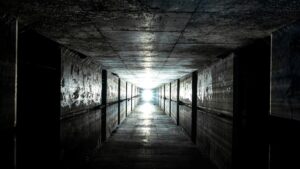Uvre’s None Such prospect is shaping up to be a fine uranium-vanadium treat

Five out of the first eleven holes in Uvre’s maiden phase-1 drill program at None Such intersected visible uranium and vanadium. Pic: Getty Images
The company’s first ever five-hole drill program at the East Canyon Project in Utah, USA has confirmed uranium and vanadium mineralisation extends beyond the historical workings.
This assay data, along with the rare earth assays outstanding from None Such, will help direct the next phase of exploration to grow the potential at None Such and the East Canyon Project overall, Uvre (ASX:UVA) managing director Peter Woods says.
A few of the standout assays include 1.22m at 0.07% U3O8 from 32.92 to 34.14m, including 0.31m at 0.21% U3O8 from 33.83m, 1.52m at 0.92% V2O5 from 32.92m to 34.44m including 0.61m at 1.89% V2O5 from 33.53m.
So far, UVE says the results confirm that the mineralised uranium and vanadium system continues beyond historical workings at None Such at a shallow depth of less than 40m.
Stratigraphic and geochemical information obtained from the initial drill program will be combined with regional mapping to vector towards potentially larger mineralised traps sites within the system.
Mission accomplished, what’s next?
“These initial assay results provide important information relating to the geology and style of mineralisation at East Canyon,” Woods explains.
“The purpose of the first pass drilling was to test whether the uranium and vanadium mineralisation extends beyond the historical workings, which is now confirmed, and gather data on the nature of mineralisation and interpreted trends.”
While the company waits for the rare earth element results, which were detected by pXRF on drilled core from None Such, inspection of drilled core and pXRF readings from the Bonanza prospect drilling continues.
Zones that have elevated scintillometer or pXRF readings for uranium, vanadium, or rare earths are being prepared for laboratory analysis.
This article was developed in collaboration with Uvre, a Stockhead advertiser at the time of publishing.
This article does not constitute financial product advice. You should consider obtaining independent advice before making any financial decisions.
Related Topics

UNLOCK INSIGHTS
Discover the untold stories of emerging ASX stocks.
Daily news and expert analysis, it's free to subscribe.
By proceeding, you confirm you understand that we handle personal information in accordance with our Privacy Policy.








